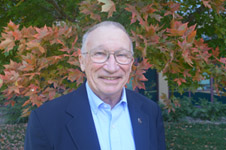Natural Resources, School of
Document Type
Article
Date of this Version
2005
Citation
From Soil Survey of Kimball County, Nebraska (2005). Fieldwork by Jay R. Wilson and David Vyain, Natural Resources Conservation Service, and Phillip Young, University of Nebraska, Conservation and Survey Division, United States Department of Agriculture, Natural Resources Conservation Service, in cooperation with the University of Nebraska, Conservation and Survey Division, the South Platte Natural Resources District, and the Kimball County Board of Commissioners.
Abstract
Geologic Framework
All of Kimball County is part of the Cheyenne Tablelands, a largely constructional part of the High Plains underlain primarily by sediments transported from the Rocky Mountains and deposited on the developing tablelands. Quaternary fluvial erosion cut away parts of the tablelands producing the valleys of Lodgepole Creek and its tributaries. The oldest rocks exposed in Kimball County belong to the upper part of the Brule Formation, youngest formation of the White River Group of rocks. The Brule Formation is Oligocene in age and was deposited from about 35 to 29 million years ago. The Brule Formation underlies the entire county and varies in thickness from a few feet to more than 600 feet. The formation is mostly covered by younger deposits, but is exposed in a few areas in natural exposures along the south valley side of Lodgepole Creek and in a few roadcuts and excavations primarily on valley sides on the south side of Lodgepole Creek west of Bushnell. Other small exposures crop out along the east part of the valley of Rocky Hollow in the northeastern part of the county.
Groundwater
The Brule Formation, which underlies all of Kimball County, is not a good aquifer. It may yield a moderate amount of water to wells where the siltstone is coarser grained, where local sandstones and conglomerates occur, or where fractures are present. Wells tapping fractures may yield large initial quantities of water, but yields may rapidly decline. Some wells along lower valley sides and valley floors may tap this source.


